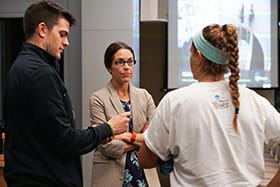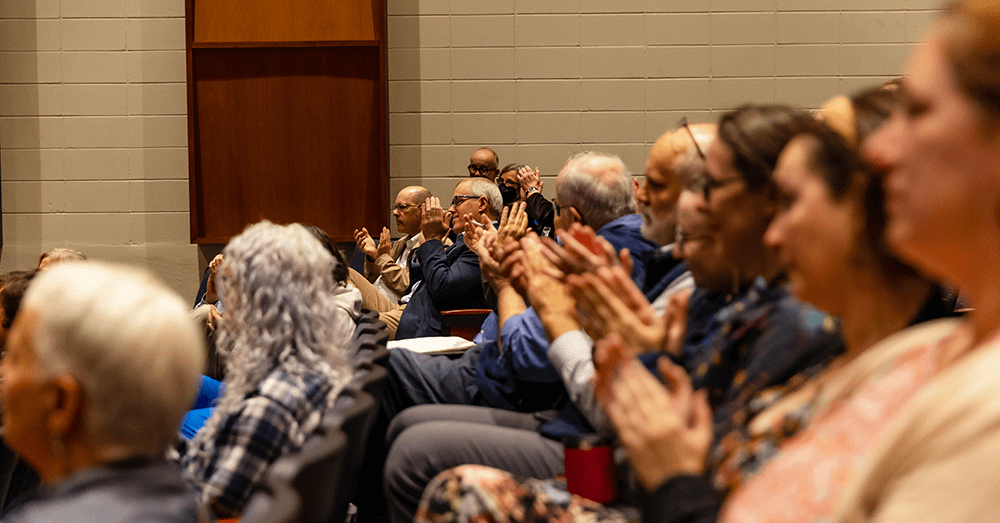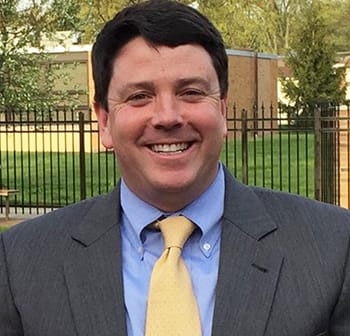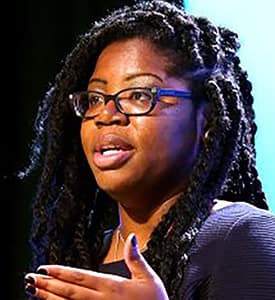NCAA speaker addresses student-athlete issues

Lydia Bell speaks to Saint Michael’s student-athletes during her talk — and just after — in the above photos. Below, male athletesand female athletes from Purple Knights teams both attended right after practices. (Photos by Danielle Joubert ’20)
Student athletes and their coaches arrived at the Roy Room fresh from practice Thursday night, many still wearing their Purple Knight gear and some carrying field hockey sticks and soccer balls. This came as no surprise to Lydia Bell, the visiting speaker, whom they rushed over to see. In fact, the sight was only fitting for the question under discussion: how are these student athletes and their peers balancing athletics, academics, social lives, and sleep?
Bell, who has her Ph.D. in Language, Reading and Culture with a master’s in education, is associate director of research and academic performance for the NCAA; she visited Saint Michael’s College on October 11 to share her association’s data with the school’s athletic community.
She was invited and introduced by Hope Happens Here, a student-led group on campus dedicated to promoting mental health awareness among athletes, who often face an increased stigma surrounding wellbeing concerns. The NCAA surveys current and former student athletes alike every year to see how their bodies and minds are coping with the pressures maintaining a GPA and fully committing to a team on and off the field.
Bell began with figures from college first-years reporting on their stress from senior year of high school, a figure that sets the tone for a college career. A concerning percentage of respondents reported being “overwhelmed” by the time they enter college: 23 percent of men and a whopping 51 percent of women. These numbers are only slightly lower than last year’s, which marked an all-time high. And despite their high levels of physical stress and activity, student athletes across all sports are losing out on the sleep hours they need to function.
Division II athletes reported spending an average of 38.5 hours weekly on academics. An additional 32 hours go to athletics. After a startling 70.5 hours of combined study, practice, and play, it’s no wonder that this year’s student athletes are only getting an average of 6.27 hours of sleep per night, down 13 minutes from last year. And most athletes spend even more hours on athletics during the off-season instead of catching a break. Students in the audience even laughed knowingly while seeing their reality laid out by the numbers, nodding along to the data. The near chaos of such a busy lifestyle has lost some of its bite among the people who live it day-to-day. It’s a tricky balancing act to maintain, and laying it out on paper can leave one to wonder if it comes at the expense of a student-athlete’s overall wellbeing, the speaker’s message seemed to suggest.
reported spending an average of 38.5 hours weekly on academics. An additional 32 hours go to athletics. After a startling 70.5 hours of combined study, practice, and play, it’s no wonder that this year’s student athletes are only getting an average of 6.27 hours of sleep per night, down 13 minutes from last year. And most athletes spend even more hours on athletics during the off-season instead of catching a break. Students in the audience even laughed knowingly while seeing their reality laid out by the numbers, nodding along to the data. The near chaos of such a busy lifestyle has lost some of its bite among the people who live it day-to-day. It’s a tricky balancing act to maintain, and laying it out on paper can leave one to wonder if it comes at the expense of a student-athlete’s overall wellbeing, the speaker’s message seemed to suggest.
Yet in many respects, athletes are doing better than the general student population, she observed. While their numbers could improve, athletes report lower stress and still more hours of sleep than non-athletic students. There’s a possibility that the stigma surrounding mental health is stronger among athletes and that respondents are hesitant to “complain,” potentially skewing these numbers. But the health benefits of athletics are the most crucial factor in the increased mental, physical, and social wellbeing.
“The minute you walk onto campus, you’ve already got a team around you,” Bell noted. “You’re entering already being part of a network, which I think helps students make that transition into college.” She also acknowledged the simple and clear benefit of exercise. “One of the best things that helps you with mental health concerns is physical activity. You guys have a leg up on that,” she said.
The numbers might suggest that despite the added responsibility and a perpetually full schedule, student athletes are better off with their sport than without. Even still, informational events like this one let students know where their communities need improvement, as well as where to find the resources to seek it. To start with, the data suggest that stress is higher among female athletes and athletes of color. While Division II women face decreased expectations to go pro compared to their male counterparts, they face more pressure to participate in college sports
Bell also discussed many resources available through the NCAA and its associates, such as videos on mental health topics, support groups for injured athletes, and even guides for transitioning out of athletic life for graduates or students who decide to leave their respective sports – guides that aim to support new programs for the enhancement of psychosocial wellbeing among student athletes. Past topics have included sleep, disordered eating, racial climate, and substance abuse.
On campus at Saint Michael’s College, Hope Happens Here is in its fourth year of operation and going strong. Along with other campus organizations devoted to mental health and wellbeing, it signals a bright future for erasing the stigma and enriching health resources for students, athletes and non-athletes alike, the speaker said.





